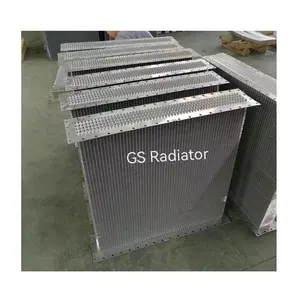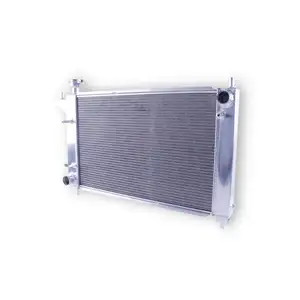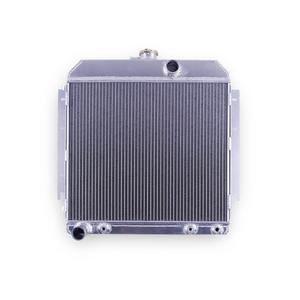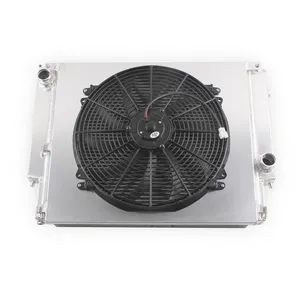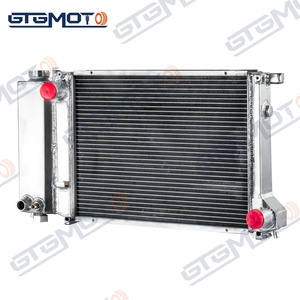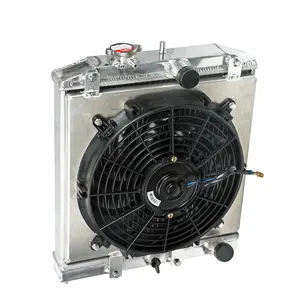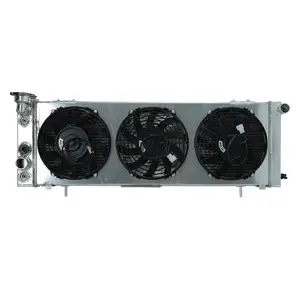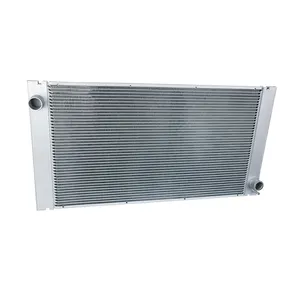2 Row Radiator Vs 3 Row


























































About 2 row radiator vs 3 row
Where to Find 2 Row Radiator vs 3 Row Radiator Suppliers?
China remains a dominant force in the global automotive radiator manufacturing sector, with specialized production clusters concentrated in Hubei, Shandong, Zhejiang, and Guangdong provinces. These regions host vertically integrated facilities capable of producing both 2 row and 3 row radiators at scale, leveraging localized access to aluminum and copper raw materials, precision extrusion technologies, and mature logistics networks. Hubei, particularly Shiyan City, is recognized as a core hub for truck and engine cooling systems, housing over 400 auto parts manufacturers within a 50km radius.
Suppliers in these industrial zones benefit from streamlined supply chains that reduce component lead times by 15–25% compared to offshore alternatives. The integration of automated brazing lines, CNC tube forming, and pressure testing chambers enables consistent output of high-efficiency radiators tailored for passenger vehicles, commercial trucks, and performance applications. Buyers gain access to flexible production runs—from single-unit prototypes to bulk orders exceeding 1,000 units—with average lead times ranging from 15 to 30 days depending on customization level and material selection (aluminum vs. copper-brass).
How to Choose 2 Row Radiator vs 3 Row Radiator Suppliers?
Selecting reliable suppliers requires due diligence across technical, operational, and transactional dimensions:
Technical & Material Specifications
Evaluate whether the supplier specializes in aluminum or copper-brass construction, as this impacts thermal efficiency, weight, and corrosion resistance. Aluminum radiators are lighter and preferred for modern passenger vehicles and racing applications, while copper-brass variants offer superior heat dissipation for heavy-duty trucks. Confirm compatibility with OEM specifications and verify core thickness (2.5–4 inches for 3 row units) and fin density (14–18 fins per inch).
Production and Customization Capability
Assess key indicators of manufacturing maturity:
- In-house tooling and die design for custom fitment
- Capacity for full-aluminum, dual-pass, or cross-flow configurations
- Support for OEM branding, color finishes, and mounting bracket modifications
Prioritize suppliers advertising customization options in their profiles, indicating established R&D workflows and agile production lines.
Quality Assurance and Delivery Performance
Review documented quality control protocols including hydrostatic pressure testing (standard: 1.2–1.5 bar for 5+ minutes), leak detection, and airflow validation. Cross-reference on-time delivery rates—top-tier suppliers maintain ≥99% fulfillment punctuality—with response time metrics (ideally ≤8 hours). While formal ISO 9001 certification is not universally listed, consistent performance data suggests adherence to internal quality management systems.
What Are the Best 2 Row Radiator vs 3 Row Radiator Suppliers?
| Company Name | Main Materials | Min. Order Quantity | Price Range (USD) | On-Time Delivery | Avg. Response | Customization | Reorder Rate | Online Revenue |
|---|---|---|---|---|---|---|---|---|
| Shiyan Golden Sun Auto Parts Co., Ltd. | Aluminum, Brass, Copper | 10–20 pieces | $30–120 | 100% | ≤8h | No | - | - |
| Weihai Hengxing Auto Parts Co., Ltd. | Aluminum | 10 sets | $68.89–118 | 100% | ≤3h | Yes | 16% | US $80,000+ |
| Shanghai Speedmaster Auto Parts Co., Ltd. | Aluminum | 1 piece/set | $66.30–195 | 89% | ≤6h | Limited | <15% | US $60,000+ |
| Ruian Ep International Trade Co., Ltd. | Aluminum Alloy | 1–10 pieces | $54.38–124.80 | 99% | ≤7h | Limited | <15% | US $130,000+ |
| Zhaoqing Xinrun Auto Parts Co., Ltd. | Aluminum Alloy | 1–5 pieces | $50–120 | 92% | ≤3h | Yes | <15% | US $6,000+ |
Performance Analysis
Weihai Hengxing and Zhaoqing Xinrun stand out for responsiveness (≤3h) and customization capabilities, making them suitable for buyers requiring tailored designs or rapid prototyping. Ruian Ep International leads in online transaction volume (US $130,000+), supported by competitive pricing and low MOQs starting at one unit. Shiyan Golden Sun achieves perfect on-time delivery despite broad material offerings, indicating stable production planning. Shanghai Speedmaster commands premium prices for niche applications (e.g., BMW E36 M3), though its 89% delivery rate warrants closer monitoring. Buyers seeking small-lot flexibility should prioritize suppliers with sub-10-piece MOQs and scalable pricing tiers.
FAQs
What is the difference between 2 row and 3 row radiators?
A 2 row radiator uses two banks of tubes for coolant flow, offering adequate cooling for standard engines. A 3 row radiator adds a third tube layer, increasing surface area and heat exchange capacity—ideal for high-load or modified engines. However, 3 row units may restrict airflow if not properly engineered, potentially reducing net efficiency in some configurations.
Do 3 row radiators always provide better cooling than 2 row models?
Not necessarily. While 3 row radiators have more coolant-carrying tubes, they can create greater airflow resistance. A well-designed 2 row aluminum radiator with high fin density and efficient core configuration often outperforms a poorly optimized 3 row unit. Thermal performance depends on core design, material conductivity, and system integration.
Can I customize the size or mounting configuration?
Yes, several suppliers—including Weihai Hengxing and Zhaoqing Xinrun—offer customization for dimensions, inlet/outlet positions, fan shroud integration, and finish options. Provide detailed CAD drawings or physical samples to ensure accurate replication. Prototype development typically takes 10–18 days after design approval.
What are typical MOQs and pricing trends?
MOQs range from 1 piece (common among exporters targeting aftermarket buyers) to 20 pieces for wholesale batches. Unit prices vary significantly by material and complexity: basic 2 row aluminum units start at $30, while high-performance 3 row racing radiators exceed $120. Bulk orders generally achieve 15–25% cost reduction.
How are radiators tested before shipment?
Reputable suppliers conduct pressure tests at 1.2–1.5 times operating pressure for minimum 5-minute durations to detect leaks. Some vendors provide test videos or third-party inspection reports upon request. Visual checks for brazing integrity, fin alignment, and tank weld quality are standard pre-shipment procedures.




